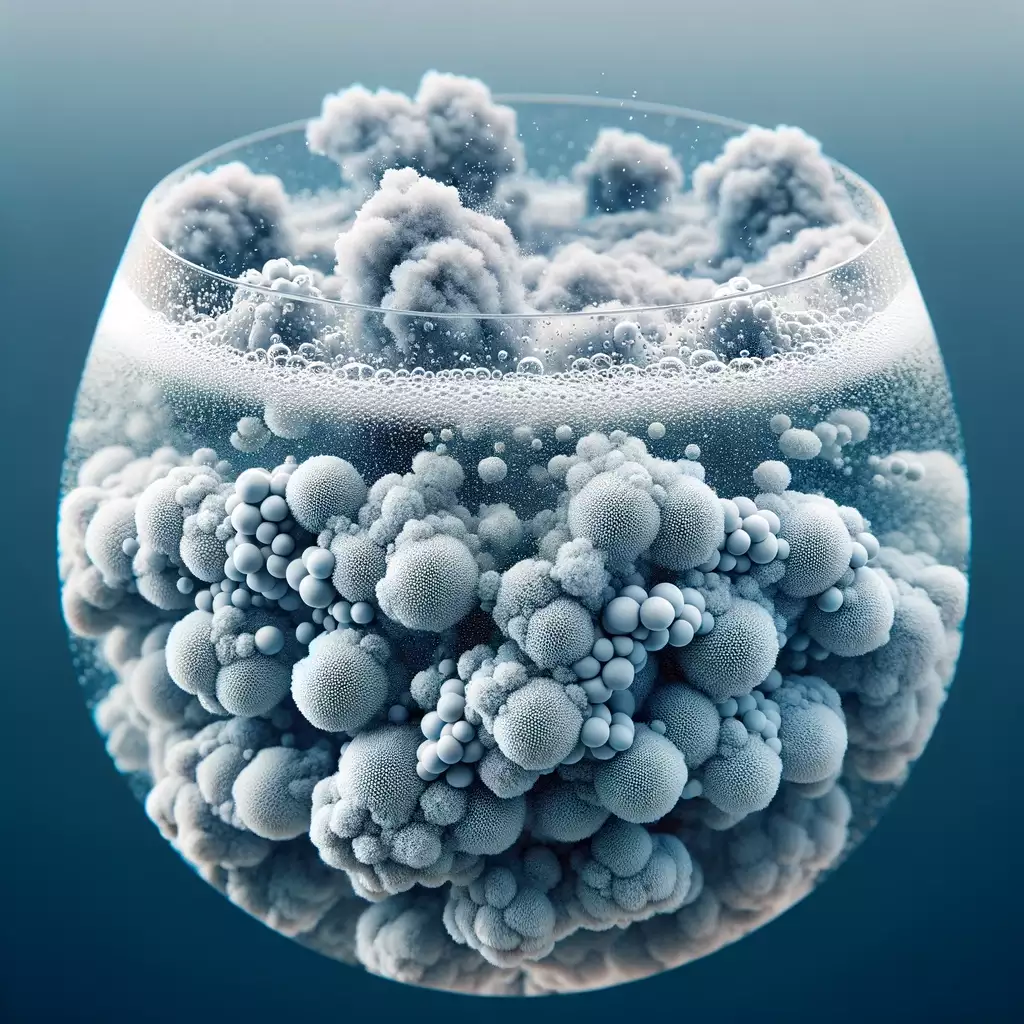Water treatment flocculants are high molecular weight polymers, reaching molecular weights of up to 20 million. The dissolving mechanism is such that solid PAM swells upon contact with water and then dissolves in it. Additionally, the rate and amount of water treatment agent PAM added are also critical. It must be added evenly and slowly. If added too quickly or in excess, the polyacrylamide that first contacts and swells in the water will encapsulate the subsequent product that has not yet contacted water, leading to the aforementioned issue, namely the clumping of the water treatment agent PAM in water. Therefore, researching its formation mechanism and finding effective treatment methods is of great significance for improving wastewater treatment and saving on operational costs.

The growth process of flocculant bodies is one of contact and collision between tiny particles. The quality of flocculation depends on two factors
- The strength of the large molecular floccules formed after the coagulant hydrolysis, which have an adsorption bridging effect, depends on the characteristics of the flocculant itself.
- The study of the collision probability between particles, and how to achieve reasonable and efficient collisions. To increase the collision probability, it is necessary to increase the velocity gradient, which requires increasing the energy consumption of water, that is, increasing the flow rate in the flocculation tank.
If particles coagulate too quickly during flocculation, two problems may arise
(1) If the flocculant body grows too quickly, its strength will weaken. When subjected to strong shear forces during flow, it will be cut off, and the cut adsorption bridges cannot continue, thus restricting the flocculation process. As the flocculant body grows, the water flow rate should be continuously reduced to prevent easy formation of flocculant bodies.
(2) If part of the flocculant body grows too quickly, the surface area of the flocculant body will decrease significantly. Some small particles that have not fully reacted will lose the opportunity to contact larger particles, making it difficult to regrow and be intercepted by the filter.
Causes of premature floc formation
Insufficient mixing
Insufficient stirring can cause the flocculants to partially dissolve, causing them to form floes prematurely. Lack of proper mixing may result in uneven distribution of flocculant, resulting in the formation of localized areas of high concentration of flocculant.
Improper dosage
Excess flocculant may overwhelm the system, causing flocs to form before the intended treatment stage. Underdosing can also be problematic as it may not provide sufficient charge neutralization, resulting in ineffective floc formation.
Incorrect selection of flocculant
Using a flocculant with an inappropriate charge or molecular weight for a particular application may result in premature floc formation.
envirnmental factor
Temperature changes can affect the solubility and reactivity of flocculants, leading to the formation of flocculants.
Water quality parameters such as pH, salinity and hardness affect the flocculation process.
Improper storage and handling
Flocculants that have been exposed to moisture or degraded from improper storage can form gels or flocculants as they dissolve.
Strategies to prevent the formation of flocculant bodies include
- Mechanical interference: High shear mixers can be used to break immature flocculant bodies into finer particles that can be redissolved or removed.
- Chemical adjustment: Adjusting the pH of water can sometimes help redissolve flocculants. Adding dispersants or other chemical agents can counteract the forces that cause flocculant body formation.
Through a series of measures, the clumping phenomenon that occurs during the flocculation process can be effectively resolved. By optimizing the selection of flocculants, adjusting the amount and mixing conditions, as well as improving storage and operational processes, this becomes an important task. Only by doing so can the effectiveness of water treatment be enhanced, ensuring the long-term stability and sustainable development of urban water supply systems.
